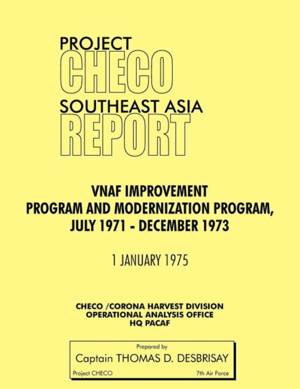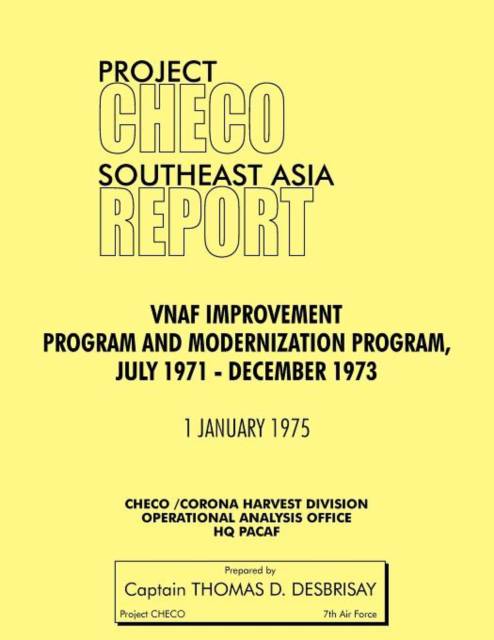
- Afhalen na 1 uur in een winkel met voorraad
- Gratis thuislevering in België vanaf € 30
- Ruim aanbod met 7 miljoen producten
- Afhalen na 1 uur in een winkel met voorraad
- Gratis thuislevering in België vanaf € 30
- Ruim aanbod met 7 miljoen producten
Zoeken
Project Checo Southeast Asia Study
Vnaf Improvement and Modernization Program, July 1971 - December 1973
Thomas D Desbrisay, Hq Pacaf Project Checo
Paperback | Engels
€ 48,45
+ 96 punten
Omschrijving
High quality reprint of a recently declassified 1971 study. The period from July 1971 through the end of 1973 was a time of transition, growth, and profound challenge for the Vietnamese Air Force (VNAF). As U.S. personnel continued to withdraw from South Vietnam (SVN), the VNAF was faced with growing combat requirements and demanding force expansions. Then, following a massive Communist offensive in the Spring of 1972, VNAF personnel, support, and operational capabilities were pushed to the limit to respond to intensified combat needs, force structure increases, and accelerated squadron activation schedules. These difficulties were overshadowed in late 1972 when, in anticipation of a cease-fire and an accompanying total withdrawal of U.S. forces from Vietnam, there was an unprecedented infusion of aircraft and equipment into South Vietnam, and a massive transfer of remaining U.S. facilities to the South Vietnamese. Once more the VNAF force structure was expanded and activation schedules were accelerated. Shortly thereafter, on 27 January 1973, the Agreement to End the War and Restore Peace in Vietnam was signed, and during the next 60 days U.S. forces and advisors were withdrawn from Vietnam. Unfortunately, the "cease-fire' did not bring with it a period of peace and stability, thus necessitating continuing VNAF combat requirements in addition to its monumental transition, expansion, and training tasks. The combination of these factors--marked VNAF growth, continuing combat requirements, and withdrawal of U.S. forces and advisors--presented the VNAF with its greatest challenge of the conflict. This report examines the events which occurred, the goals pursued, the problems encountered, and the achievements attained in the program to improve and modernize the Vietnamese Air Force between July 1971 and December 1973. It also addresses the limitations which, as of the end of 1973, remained to be overcome on the road toward VNAF self-sufficiency.
Specificaties
Betrokkenen
- Auteur(s):
- Uitgeverij:
Inhoud
- Aantal bladzijden:
- 238
- Taal:
- Engels
Eigenschappen
- Productcode (EAN):
- 9781780398242
- Verschijningsdatum:
- 17/05/2012
- Uitvoering:
- Paperback
- Formaat:
- Trade paperback (VS)
- Afmetingen:
- 216 mm x 279 mm
- Gewicht:
- 562 g

Alleen bij Standaard Boekhandel
+ 96 punten op je klantenkaart van Standaard Boekhandel
Beoordelingen
We publiceren alleen reviews die voldoen aan de voorwaarden voor reviews. Bekijk onze voorwaarden voor reviews.











